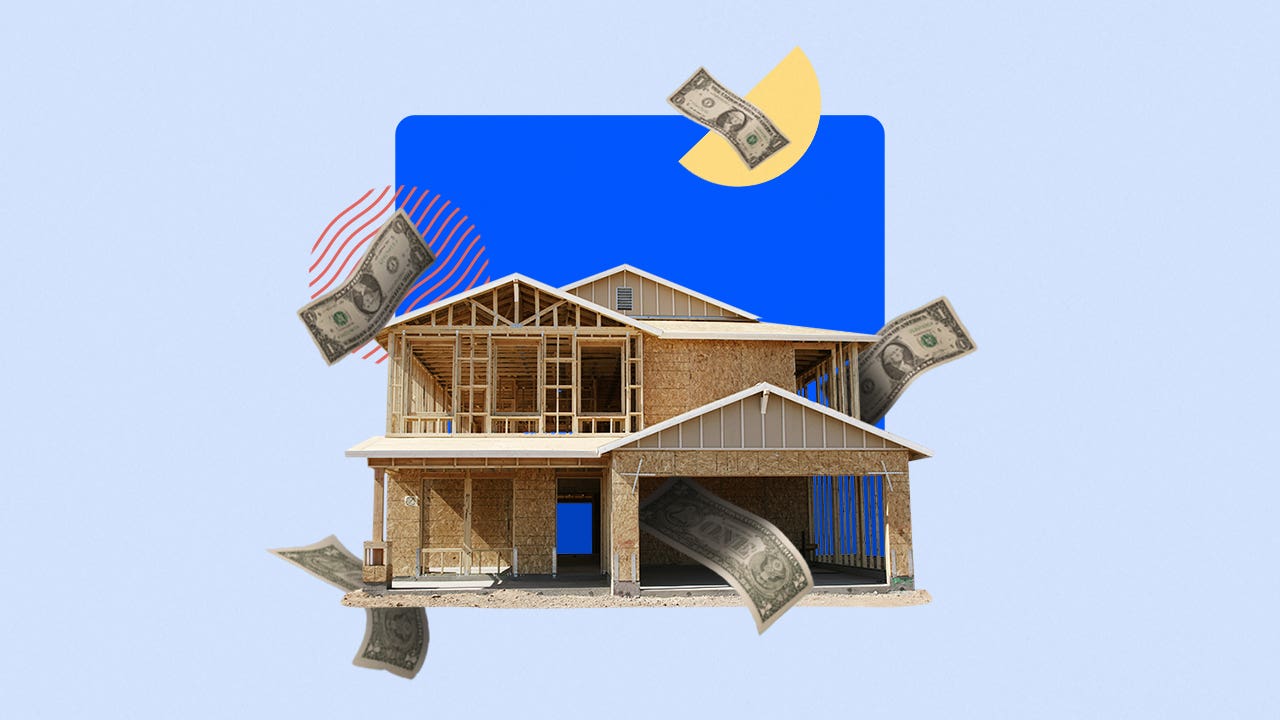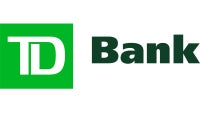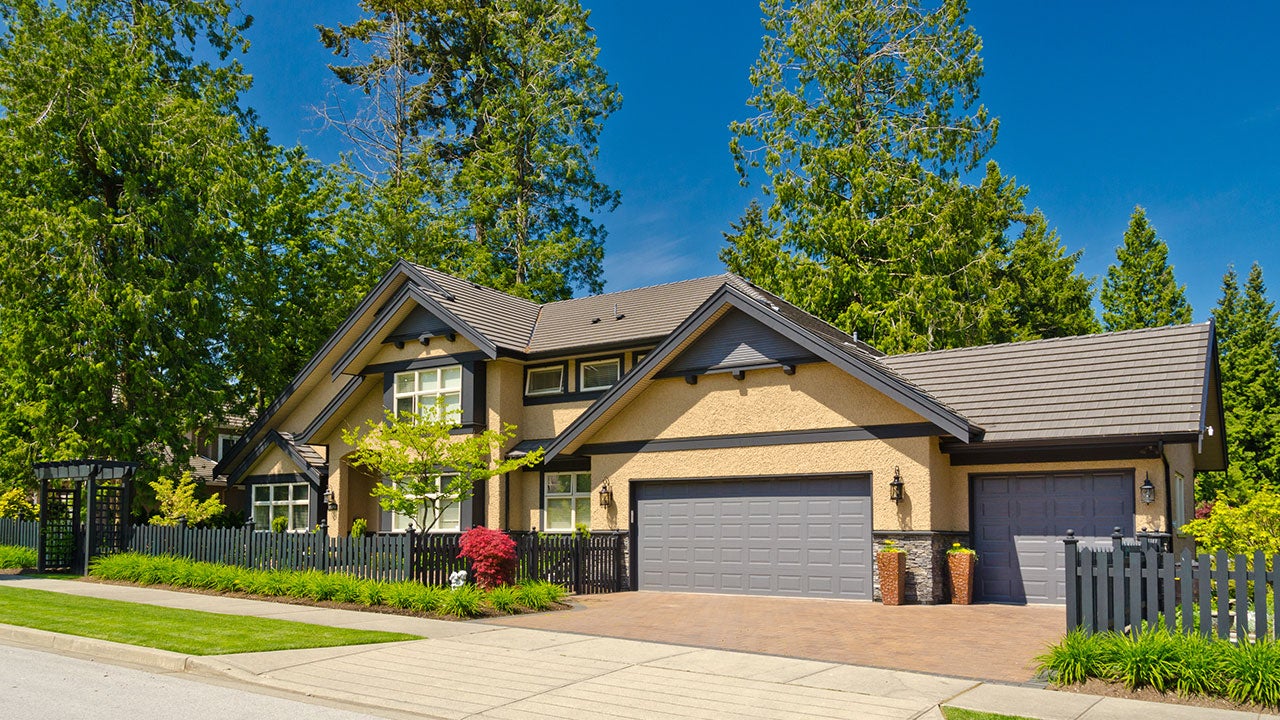Best construction loan lenders in 2025

A construction loan helps finance the building of a home, from the land or lot purchase to the permits, labor and materials. This type of loan isn’t as easy to come by as a regular mortgage for an existing home, but many types of lenders offer them, including big banks. Here are our picks for the best construction loan lenders in 2025.
Best construction loan lenders
| Lender | Availability | Bankrate Score |
|---|---|---|
| *The bank or lender offers construction loans in these states only. It might offer other types of mortgages in other states. | ||
| PNC Bank | Alabama, Arizona, California, Colorado, Florida, New Mexico, Texas and Washington* | 4.8 |
| U.S. Bank | All U.S. states | 4.8 |
| Wells Fargo | All U.S. states | 4.8 |
| New American Funding | All U.S. states | 4.6 |
| First Citizens Bank | All U.S. states except Delaware, Idaho, Indiana, Kentucky, Maine, New Hampshire, North Dakota, Rhode Island, South Dakota, Washington, West Virginia and Wyoming | 4.5 |
| Old National Bank | All U.S. states | 4.5 |
| TD Bank | Connecticut, Delaware, Florida, Maine, Maryland, Massachusetts, New Hampshire, New Jersey, New York, North Carolina, Pennsylvania, Rhode Island, South Carolina, Vermont, Virginia and Washington, D.C. | 4.5 |

PNC Bank
-
- Availability: Alabama, Arizona, California, Colorado, Florida, New Mexico, Texas and Washington*
- Loans offered: Conventional, jumbo, FHA, VA, USDA, construction
- Where to find: Branch locations and online
*The bank or lender offers construction loans in these states only. It might offer other types of mortgages in other states.
-
Pros
- Online and in-person options to apply
- Application can be tracked online
Cons
- Limited mobile app functionality
- Below-average J.D. Power rating for mortgage servicing
-
PNC Bank scores well for affordability, availability and borrower experience. The bank’s construction loan is a standard construction-to-permanent loan that begins with interest-only payments, then converts to a mortgage when the build is complete.

U.S. Bank
-
- Availability: All U.S. states
- Loans offered: Conventional, jumbo, FHA, VA, construction
- Where to find: Branch locations and online
-
Pros
- Provides lender credit worth up to $1,000 for qualifying banking customers
- Displays rates online
- Offers new construction loans
Cons
- Tougher borrower requirements for FHA loans (640 credit score in most cases)
- No USDA loans
-
U.S. Bank scores well for affordability, availability and borrower experience. The bank’s construction loan options include a construction-to-permament loan that flexes up to 18 months and comes with a fixed or adjustable interest rate, as well as an adjustable-rate lot loan.

Wells Fargo
-
- Availability: All U.S. states
- Loans offered: Conventional, jumbo, FHA, VA, USDA, construction
- Where to find: Branch locations and online
-
Pros
- Displays mortgage rates online
- Massive branch network
- Will consider non-traditional credit references in application process
- Offers low-down payment options to assist lower-income borrowers
Cons
- Dialed back its mortgage offerings
- Below-average customer satisfaction scores and negative past customer reviews
-
Wells Fargo scores well for affordability, availability and borrower experience. The bank’s construction loan includes the option to pay for the “Builder Best Extended Rate Lock,” which keeps your interest rate as-is for the duration of the project, up to 12 months.

New American Funding
-
- Availability: All U.S. states
- Loans offered: Conventional, jumbo, FHA, VA, USDA, construction
- Where to find: Branch locations and online
-
Pros
- More than 270 branch locations
- Financing initiatives for Latino, Black and LGBTQ+ buyers
Cons
- Lowest advertised rates require paying points and a hefty 40% down payment
- Doesn't disclose lender fees online
-
New American Funding scores well for affordability and availability. The lender’s conventional construction-to-permanent loan has a fixed interest rate, but you can adjust that rate within 30 days of the home’s completion if you so choose. It also only requires 5 percent down. In addition, the lender offers FHA and VA construction options with potentially more flexible credit and down payment requirements.

First Citizens Bank
-
- Availability: All U.S. states except Delaware, Idaho, Indiana, Kentucky, Maine, New Hampshire, North Dakota, Rhode Island, South Dakota, Washington, West Virginia and Wyoming
- Loans offered: Conventional, jumbo, FHA, VA, USDA, construction loans
- Where to find: Branch locations and online
-
Pros
- Wide variety of loan options, including medical professional mortgages
- Remote notarization and closing services
- Down payment assistance available to qualifying borrowers
Cons
- Online prequalifications available, not preapprovals
- No rates shown online
-
First Citizens Bank scores well for affordability and availability. The bank’s construction-to-permanent loan rates were competitive as of this writing, and the loan allows you to finance up to $3 million with a fixed or adjustable interest rate.

Old National Bank
-
- Availability: All U.S. states
- Loans offered: Conventional, jumbo, FHA, VA, USDA, construction
- Where to find: Branch locations and online
-
Pros
- Branches plus online banking
- First-time homebuyer and down payment/closing cost assistance programs in some states
- Special loan programs for first respondents, professors and physicians
- Private mortgage insurance not required on construction loans
Cons
- Branch locations limited to eight states
- Finance charges include $1,350 origination fee. Additional closing costs apply.
-
Old National Bank scores well for affordability and availability. Its construction-to-permanent loan comes with a term up to two years at a fixed or adjustable interest rate, and with no mortgage insurance requirement.

TD Bank
-
- Availability: Connecticut, Delaware, Florida, Maine, Maryland, Massachusetts, New Hampshire, New Jersey, New York, North Carolina, Pennsylvania, Rhode Island, South Carolina, Vermont, Virginia and Washington, D.C.
- Loans offered: Conventional, jumbo, FHA, VA, USDA, construction
- Where to find: Branch locations and online
-
Pros
- Easy-to-use online rate estimate tool
- Wide range of loan programs, including low-down payment options
- First-time homeowner assistance in the form of lender credits and grants
Cons
- Only available to borrowers in 15 states and Washington, D.C.
- Charges an origination fee
-
TD Bank scores well for affordability and borrower experience. The bank’s construction-to-permanent loan includes the option of a fixed or adjustable interest rate; comes with interest-only payments to start; and allows borrowers to apply construction-related expenses, such as permits, to the 20 percent down payment requirement.
How to apply for a construction loan
Applying for a construction loan is similar to applying for a mortgage on an existing home, with a few extra steps and likely a longer timeline. Here are the basic steps:
1. Review construction loan requirements
To qualify for a construction loan, you’ll need to meet the lender’s requirements. These include:
- Credit score – Many lenders require a credit score of 680 or higher for a construction loan, but some might work with borrowers with lower credit scores.
- Debt-to-income (DTI) ratio – Lenders usually look for your debt obligations to total no more than 45 percent of your monthly income.
- Down payment – Be prepared to put down 20 percent or more, unless you’re applying for an FHA or VA construction loan.
- Construction plan – Lenders usually require a detailed plan before funding the first phase of the project.
- Repayment plan – In addition to the construction loan itself, you must also qualify for permanent mortgage financing. Most construction loans convert to a permanent mortgage upon completion of the home.
2. Shop around for lenders and rates
Many mortgage lenders don’t offer construction loans, so you might have to expand your search to uncover options. Banks tend to offer them more so than credit unions or online lenders, so it might make sense to start there. Some banks offer special pricing for customers with personal or business accounts.
3. Submit paperwork
Once you connect with a lender and determine your eligibility, submit your loan application plus the contractor agreement and plans from your architect or builder. The lender not only wants to know the cost of the build, but also the scope of the work and timeline.
As the lender underwrites your application, be prepared to answer any questions or provide additional documentation as needed. This’ll help you avoid delays with closing and getting the funds to your contractor.
Types of construction loans
- Construction-to-permanent loan: A loan to pay for construction costs, which then converts to a permanent mortgage once the home’s finished and ready for occupancy
- Construction-only loan: A loan to pay for construction costs by disbursing funds in increments as project milestones are met; generally has a repayment period of one year or less
- Owner-builder construction loan: A loan that operates like a construction-to-permanent or construction-only loan, but with one key difference: the borrower is also the builder
- End loan: The mortgage on the property once construction is complete
FAQ on construction loans
-
A construction loan is a short-term loan designed to help with the purchase of a plot of land and the construction of a home, or pay for major renovations to an existing home. Renovation loans, on the other hand, pay for home improvements. This funding can come in a variety of forms, such as a personal loan or a government-backed loan, or by taking out equity in your home. Renovation loans aren’t as structured as construction loans; they’re usually unsecured, and borrowers have more options when it comes to accessing funds.
-
Construction loan interest rates are generally higher than the mortgage rates for standard home purchases, in part because in a build situation, there’s no home (yet) to secure the construction loan against, making it riskier for the lender.
-
For any type of mortgage, you’ll need to qualify based on the lender’s requirements. In that sense, a construction loan is no harder to get than a traditional mortgage, provided you qualify. The process of applying for a construction loan, however, might be more difficult than your average homebuying mortgage, because you’ll need to provide more paperwork about the build and contractor, as well as follow the lender’s requirements in terms of timeline, inspections and payouts.
-
To determine the best construction loan lenders, Bankrate periodically evaluates more than 75 lenders for factors relating to affordability, availability and borrower experience, assigning each a Bankrate Score out of five stars. The best construction loan lenders generally have a Bankrate Score of 4.5 stars or higher. Learn more about our methodology.
Why we ask for feedback Your feedback helps us improve our content and services. It takes less than a minute to complete.
Your responses are anonymous and will only be used for improving our website.
You may also like

How to find the best FHA mortgage lender

Best jumbo mortgage lenders in 2025

Best mortgage lenders of January 2026





